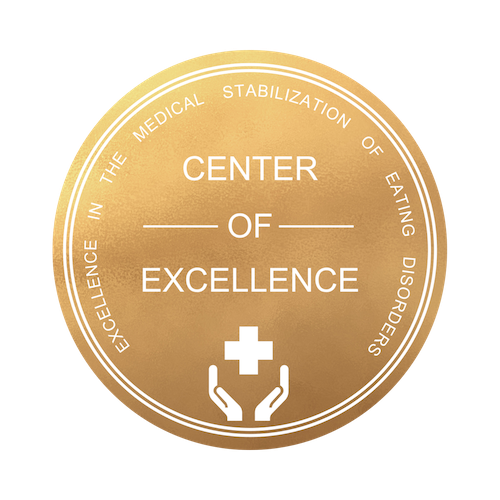Building a Relationship With Your Body: Body Acceptance & Body Neutrality
Eating Disorders and Body Image
Body image is how you see yourself when you look in the mirror or when you picture yourself in your mind. Body image consists of what you believe about your appearance, how you feel about your body and your physical experience of your body. Body image is molded through a combination of internal (personality) and external factors (social values).
Body image is complex, with both negative and positive experiences. Someone may have a positive or negative body image at different times or have both simultaneously. Body image can impact many areas of life, including the relationship with food, fitness, weight, shape and health or our relationships with ourselves and loved ones.
Eating Disorders and Negative Body Image
Negative body image consists of persistent negative thoughts and feelings about your body, which may manifest as shame, anxiety or self-consciousness. It can also involve distorted perception of your body or the idea that your appearance dictates your value. Those with high levels of body dissatisfaction are more likely to develop depression, low self-esteem and eating disorders.
Signs of negative body image:
-
Repetitive dieting behavior or restriction
-
Compulsive or excessive exercise
-
Valuing appearance as essential to self-worth
-
Preoccupation with thinness, muscularity or shape
-
Body checking
-
Negative self-talk
-
Self-objectification
-
Comparing self to others
-
Avoiding situations where body image may cause anxiety
Rethinking Your Relationship with Your Body
We’re told how we need to look, feel and act all the time. There are billboards for clothes that tell us how we should look in them, advertisements for gyms that tell us we need to go to them and op-eds from national newspapers that tell us how we need to feel about these billboards and ads. But it doesn’t stop there, we also have motivational speeches about how we must love our body, appreciate our body, be neutral about our body or need to be liberated from our body.
But what do we really need? What do we want from ourselves? What type of relationship do we want with our body? These are questions that can only be answered by us. Op-eds and motivational speeches don’t have the answer, they have an answer.
Body acceptance comes in many forms, and whatever form comes easy or resonates with you is the right one. Maybe none of them seem right for you, you combine elements of both or even if it changes over time—that’s okay too.
Forms of Body Acceptance
While all these concepts have roots and associations with certain social movements, we’ll be discussing them as they exist as models of self-perception and as tools to build a healthy self-relationship.
Body Positivity
Body positivity (or body satisfaction) is when a person is satisfied with their appearance. This commonly comes in the form of unconditionally loving your body, feeling confident in your appearance and embracing its uniqueness.
Positive Body Image v. Body Positivity
When reading about body image, you’ll come across the terms positive body image and body positivity a lot. It’s easy to assume they both mean similar things, but not quite. A person has a positive body image when they can see themselves as they are, appreciate their body and accept their body. Someone with a positive body image can still feel dissatisfied with aspects of their appearance but is also able to accept their body as it currently exists and accepts its limitations.
Body Neutrality
Body neutrality is when a person can respect and accept their body regardless of how one or society perceives it. Body neutrality often emphasizes the body’s function or ability rather than its appearance. It’s often seen as a more accessible and realistic change in perception by those with eating disorders.
Body Liberation
Body liberation is when a person is free from all expectations of how one’s body should be or look, including one’s own. It completely separates a person’s self-worth from their appearance. It is often tied to dismantling societal expectations that promote weight stigma and size discrimination.
Building a Positive Body Image
Whether your route toward body acceptance is positive, neutrality, liberation or something else—here are a few tips to get you on your way
Look at yourself as a whole person
Remember that you’re so much more than just your body. However you feel about your body and whatever your body acceptance goal is, take a moment to appreciate all that you’ve contributed to the world and your loved ones. Remind yourself of all you’ve accomplished and that true beauty comes from within. Acknowledge your talents and all the things you love to do.
Change your environment
Ditch social media accounts that make you feel bad about your appearance and follow those that make you feel good. Focus on following accounts that enrich your interests instead. Surround yourself with people that support your goals and are positive influences.
Fight the good fight
We often help ourselves by helping other people. Challenge weight stigma narratives and diet culture. Advocate for positive, neutral or liberated body talk. Let others know their worth isn’t defined by their appearance.
References
-
National Eating Disorders Collaboration. (2022, July 19). Body Image. https://nedc.com.au/eating-disorders/eating-disorders-explained/body-image/
